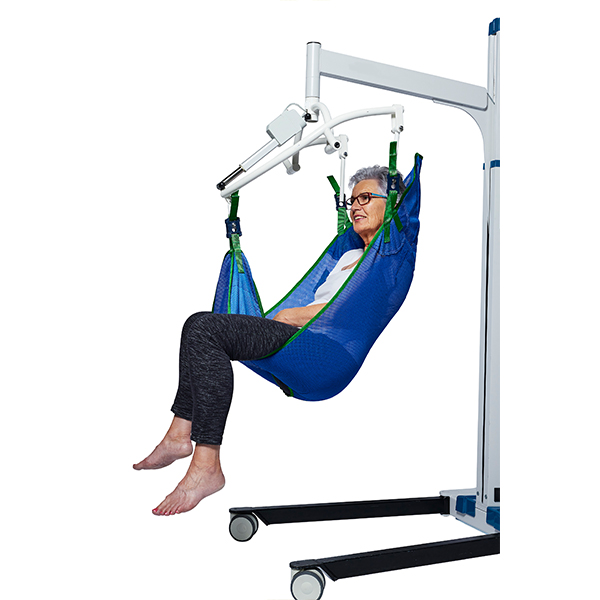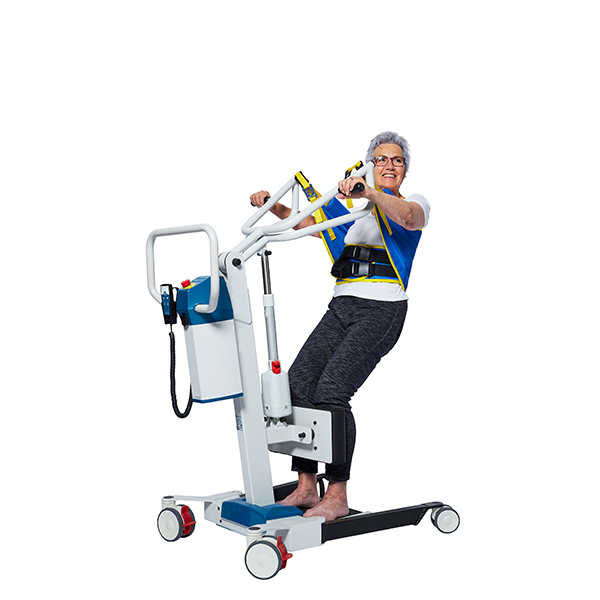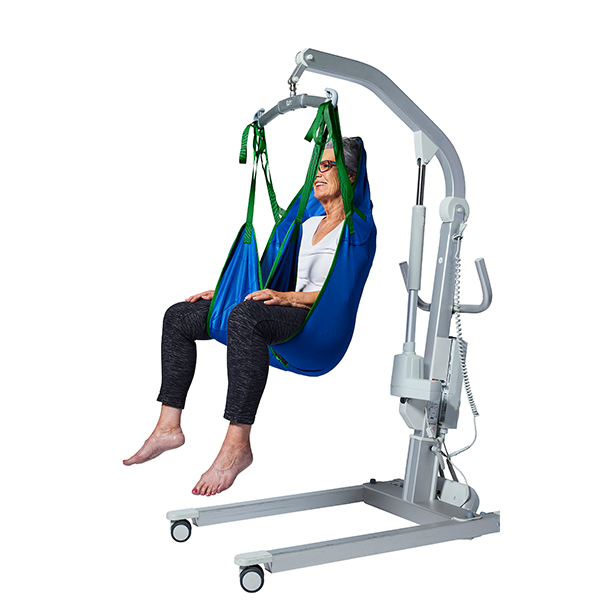
News: Patient lifts and worker risks
There are many challenges faced by healthcare workers for whom patient handling is a part of their daily job. While mechanical lifts make it much easier to move and lift patients and can help reduce the ergonomic risks associated with manual patient handling, they also introduce other workplace hazards.
Most hospitals, long term care facilities and private homes use mechanical lifting systems to move or reposition patients and clients with mobility issues. There are several different types that you may encounter including wheeled hoist/portable floor lifts, stationary hoist/fixed lifts, ceiling tracks complete with motors, sit/stand lifting aids, and bath lifts.
The following tips and good practices offer practical guidance to help prevent injuries to attendants using patient lifts.
Injury prevention
An ergonomic safe patient handling program can help reduce musculoskeletal injuries that result from the long-term cumulative physical effort of patient transfers as well as immediate injuries that result from incidents during transfers. The program should involve approval and commitment from management and will be more effective if developed in collaboration with union representatives, health and safety committee members and workers.
The ergonomic safe patient handling program will include steps to perform a needs analysis, create and standardize patient assessment criteria, develop decision trees to standardize actions, determine which controls are needed to implement specific tasks or patient needs and may institute a “no-lift” policy, where possible.
A no-lift policy would state that all manual handling tasks are to be avoided wherever possible. These policies successfully reduce the risk only if the organization has the infrastructure in place (technical solutions, lifts, equipment) to support the initiative. Training is also necessary to recognize the risk in activities, and how to follow appropriate steps to move or transfer a patient safely.
Legislation
Find out about, and meet, the legal requirements in your own jurisdiction for the use of lifts in workplaces. Some general requirements may include providing adequate lifting equipment and proper training of employees who use this equipment. It may also include proper installing of any lifting machine, as well as the testing, operating, use of, servicing, maintenance, and repair according to the manufacturer’s or an engineer’s specifications.
Sling safety
Slings are a key part of the lifting system. It is important to use the correct sling, approved for use by the patient lift manufacturer, for the specific hoist. The safe working load must be clearly marked on both the lift and the sling. Take care to ensure the sling is compatible with the load limits of the lift and the patient’s weight. Perform sling maintenance according to the manufacturer’s specifications. Inspect the sling fabric and straps to make sure they are not frayed or stressed at the seams or otherwise damaged, and if there are signs of wear, do not use it. Equipment inspections The manufacturer’s specifications will provide a frequency for periodic inspections and pre-use inspections. The periodic inspection requires documentation to demonstrate it has been completed. Pre-use inspections ensure that compatible parts are used and properly configured, and that load restrictions are not exceeded. They also identify any visible signs of damage to equipment that may lead to a failure. Create a system to ensure that defective equipment is clearly marked and taken out of service until replaced or repaired.
This article was created by the Canadian Centre for Occupational Health and Safety (CCOHS).
Check out some of our bestselling patient lifting slings



